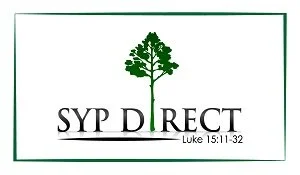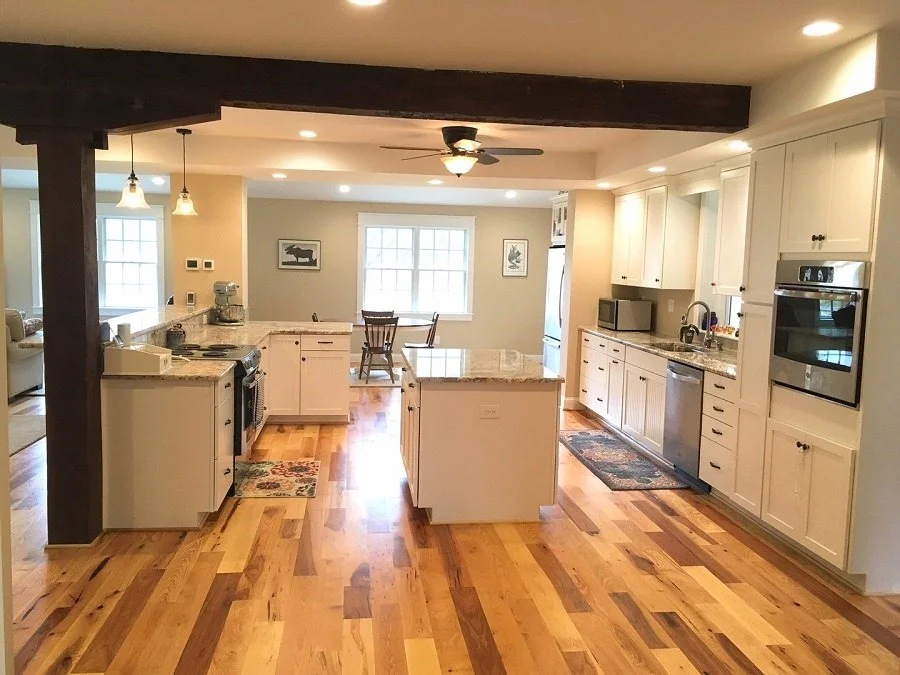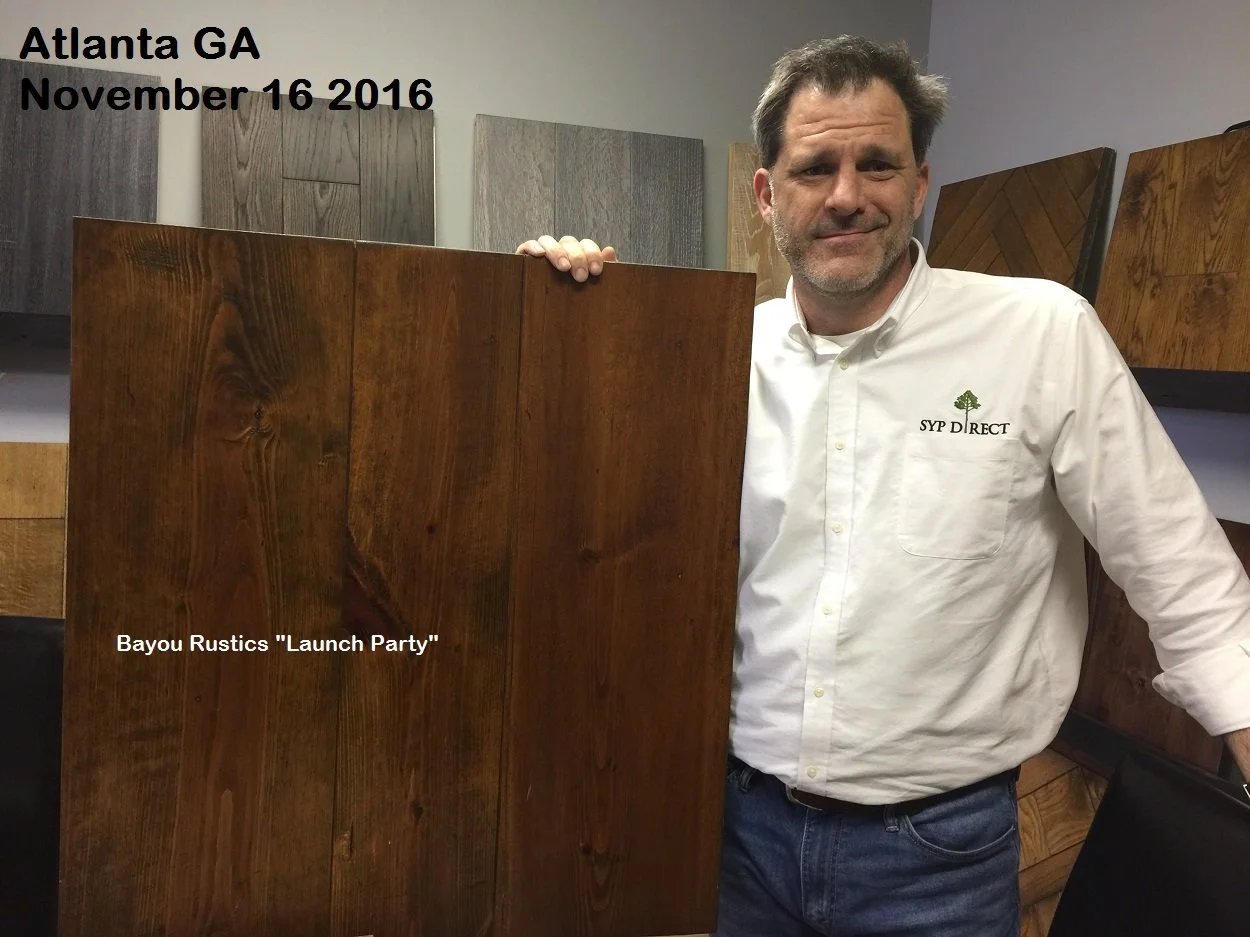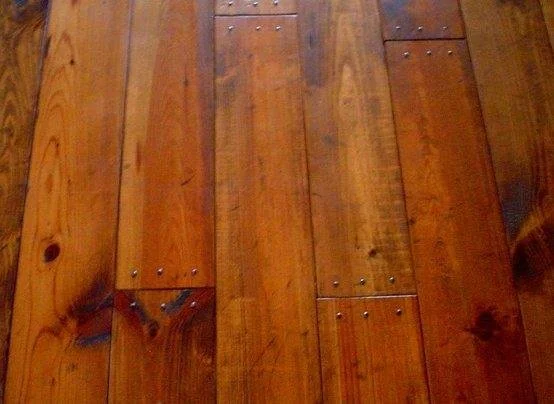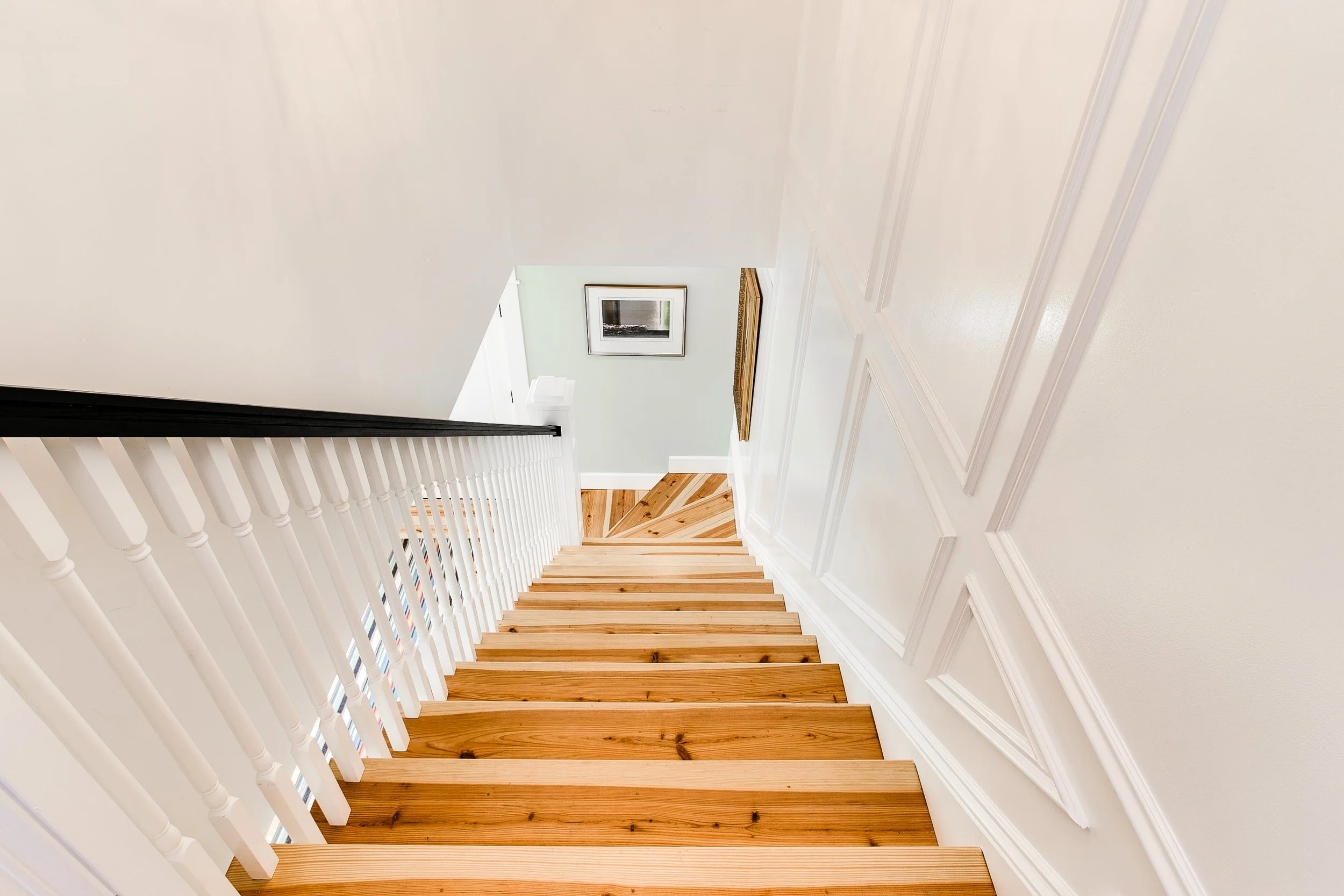SYP Direct is Southern Pine
SYP Direct is Southern Yellow Pine Direct, the homeowners source for everything real wood; specializing in New Heart and Knotty Pine.
Southern Yellow Pine is not a species, no it is a dozen species and the word Yellow, it inidates one the “hard” pines. The majority of our business is unfinished flooring sold directly to homeowners who come to SYP Direct after seraching local to no avail. Many times these customers have never seen new heart pine, knotty pine or worse believe that white pine or the local lumber yards are comparable to our flooring. The fact that we are an A+ rated Better Business Bureau rated company would be remarkable in any business but selling real wood online it is amazing. We tell the truth, get you the most your money can buy and in marketplace dominated by single use floor covers, we sell floors that outlive your house.
Why buy from SYP Direct?
Quality & Price = Value
Trust (and verify)
Pine flooring experts
Customer Service
Finish to order option
Value- At SYP Direct we differentiate ourselves by the species of our materials, the quality of our millworks and the honesty of our sales process. To put it simply, we have the same (small) margins in every floor we sell. And, do not underestimate the value of longboards. Short chopped up floors can be gorgeous but they do not have the cache of long runs which scream ‘expensive’.
Trust and Verify- Trust our A+ Rating and online reviews and verify by getting local references. That’s right, odds are SYP Direct has multiple customers close to you, unless you are in MT, ID, SD or ND where nobody is really close to anyone. However, we have great customers in those states too! Being able to trust that you are getting the most for your money is a great feeling, and one that is increasingly harder to obtain. Not with us; our mission is 100% satisfaction which includes, product, price and experience.
Pine Flooring Experts- Southern Pine represents about 5% of the flooring market, and unfinished pine is a small piece market. It is heavy, long and unprofitable compared to engineered and LVT floors. Very few flooring installation professionals understand Southern PIne or Heart pIne. We do, and with over 3 million square feet delivered to homeowners our experience is unmatched when talking about pine floors.
Customer Service-There is no mention of customer service at SYP Direct without mentioning Heather. Southern charm and manners are the first thing you may notice with product knowledge a close second. From your first source of information, navigating you to the right person acting as shipping concierge for your delivery. It is the last one that might go unnoticed but when dealing with common carriers the pitfalls can cost money. SYP Direct does not own trucks, we utilize LTL routes with trusted common carriers. Even so, it seems some issues need attention with 20% of shipments. The amount of money Heather has saved our customers versus shipping themselves cannot be accurately estimated, not even close.
Custom Finish aka finish to order- Our partnership with Premiere Finishing of Reidsville, NC. gives homeowners to access a state-of-the-art flat line finish, i.e. factory, using our floors. What does that mean? Your floors will not be short boards with an average of 24” like the box stores. Our process is an ala carte’ menu of extras that allows you to create your own custom floor, using the latest UV technology. The amount of money this saves each customer is a direct correlation with their zip code. For instance, wide plank New Heart Pine in Manhattan is going to save the buyer more money than when we send it to South Carolina, or any other place in country compared to that zip code
White Oak and Walnut
This is a classic old school hardwood floor 3” tongue and groove Black Walnut. To be honest, we sell much more White Oak than Walnut, but this rustic look has always been one of my favorites.
SYP Direct does not shop sources for hardwoods. We found them when they inquired with us about Heart Pine. Because SYP Direct gives you a 100% satisfaction guarantee and a coverage gurantee our source must be top of the line and consistent with grades, or we risk going out of business replacing floors.
Installing Pine Floors
Installing your pine floors is an important part of the process, right? We can sell you the most amazing floor, but the finish is what matters in the end. Now, our floors are easy to make look great but it helps to have had experience with Southern Pine. So DIY folks you can answer that question, but your local pro may say yes because that is what sales people do, or they may think Pine is just like Oak, for example.
Examples of local options for installing pine floors
-
Josh Gaskin, Gaskin Flooring 35 years experience and an A+ rating installing pine floors.
-
Fausto Floors
-
Timeless Flooring Nick Reahberg
-
We have several options in TN and Nashville area. Your city is so hot, we had to list it.
-
Danny Nelson-contact us for information.
-
Robin Restoration General Contractors
-
Denver Hardwood Flooring
Southern Yellow Pine Direct does not have installation professionals under contract. You have no obligation to work with anyone, it is your floor. SYP Direct is here to facilitate the process and provide whatever you need, up to and including installation. However, the DIY customer is our mainstay. Homeowners, represent 70% of our business and that makes our A+ BBB rating even more impressive.
Contact us for local installation
Pine floors near me?
Where can I find pine flooring near me? We are local no matter where you live!
Pine floors near me. These four words search term AI will place with auto suggest. In fact, we are attempting to use this phrase, pine near me; to help homeowners find their source for real wood . We ship nationwide with a 100% coverage guarantee, that combined with our A+ BBB rating and reviews from MT, HI , CA and ID distance is not an issue. The farther away the cheaper per mile and in some zip codes we could triple shipping and the deal on our quality wood still makes it a great deal! A+ BBB for a decade thanks to one thing, customer service. Find out more.
The absolute best pine floors shipped nationwide from AL (domesitic) GA and SC locations (Caribbean Shown here).
Local no matter where you live.
How about a box store? Have you ever wondered how a liquidation specialist has their own brand? More homeowner equity is lost using faux floors, or floor covers; we are witnessing the industries new carpet. Seriously, even the terminology has changed. Laminate Hardwoods? That is a contradiction, and reminds me a line from the Princess Bride (showing my age)’ “you use that word alot, I do not think it means what you think it means”.
Real wood last forever and not in a landfill
https://www.sypdirect.net/syp-blog/real-wood-is-the-green-choice
Please do not take my word for this, logic + chemistry aka science work too. Do you remember Grandmas carpet? Do you know where it is now? 10 lbs of carpet per U.S. resident will go in landfills replaced with LVT or laminate, both petrochemical industry products the same chemical make up as PVC, yup that plastic throwback. Getting to point? Half - Life of 100,000 years, while leaking into the ground water and becoming the new carpet while we are still dealing with the old carpet in the same fills.
“Every single person that comes into our new house immediately says how awesome the floors look! The 12’ boards were a great choice. Thanks for exceeding our expectations, customers for life
”
Trust Matters
The fact that we are an A+ rated Better Business Bureau rated company would be remarkable in any business but selling real wood online it is amazing. We tell the truth, get you the most your money can buy and in marketplace dominated by single use floor covers, we sell floors.
We are the homeowners source for building materials, including but not limited to our one a kind pine floors. Knotty Pine, New Heart Pine, Caribbean Heart Pine and Antique Reclaimed heart pine in small batches from select producers when available. For prefinished and unfinished hardwood flooring visit the Bayou Rustics up top. For everything pine search our site,search our blog and send all the questions you are being asked when you tell people you are thinking about pine.
A+ Rated BBB since 2016
Over 100 ‘real’ reviews online
Customers in 49 states
1000’s of customer photos
Customers in 30 states (multiple) that speak with prospects.
Logistics experts (Heather)
Secure source- they have been the same two since 2016
The majority of our business is unfinished flooring sold directly to homeowners who came to SYP Direct because they wanted more than what is being offered locally. Many times these customers have never seen new heart pine, knotty pine or worse believe that white pine or the local lumber yards are comparable to our flooring.If you are building or remodeling your home, why not put something down that can add value one day, not a future cost or liability. If not us, please find a local source for real wood and do your homework. Spend as much time researching your flooring as you would a new car. Now imagine there was a car that got better with age and lasted, literally, your entire lifetime. The choice would be simple, and so is this one; buy real wood.
The fact that we are an A+ rated Better Business Bureau rated company would be remarkable in any business but selling real wood online it is amazing. We tell the truth, get you the most your money can buy and in marketplace dominated by single use floor covers, we sell floors.
VIP Customer Service with Luxury Floors
Kiln dried
A dual kiln process for wood flooring refers to a manufacturer's method of drying wood twice to achieve a more consistent and lower final moisture content. While standard kiln-drying is a crucial step for producing stable lumber, a dual kiln approach goes further to minimize future warping, cupping, and shrinkage, especially for wide-plank flooring.
Our desription reads; KILN dried, tongue and groove with relief grooves for stability, it is standard specification for wood floors. But what does it mean to be KILN dried, and why is it so important?
Kiln drying is important because it stabilizes the wood by removing excess moisture, which prevents warping, cracking, and shrinking over time, making it ideal for indoor projects and furniture. It also sterilizes the wood by killing insects, eggs, larvae, mold, and fungi, increasing its durability and lifespan.
KILN drying makes install easy
Our dual kiln process uses state of the art technology that monitors each board. This insures each piece moisture content is brought down to the proper level for that species. This makes installation easy, and allows your floor to perform much better over time.
Southern Yellow Pine Direct minimizes the amount of time between the kiln and the jobsite. What does this mean for the pine wood floor installation? Kiln drying is a standard practice in wood production mills and serves to efficiently bring green lumber moisture levels down to “workable” range–moisture content levels that will not end in the myriad of problems that can be caused by excess moisture levels in wood.
Dual Kiln Drying
Southern Yellow Pine uses a dual kiln process, which is just what is sounds like, we utilize both air and heat. A dual kiln process for wood flooring refers to a manufacturer's method of drying wood twice to achieve a more consistent and lower final moisture content. While standard kiln-drying is a crucial step for producing stable lumber, a dual kiln approach goes further to minimize future warping, cupping, and shrinkage, especially for wide-plank flooring.
The standard single kiln process
In a standard process, wood is placed in a kiln, and heated air is circulated to reduce its moisture content. The goal is to reach an equilibrium moisture content (EMC), typically between 6% and 10% for hardwood flooring. However, especially with wider planks, some variation can remain between individual boards.
The dual kiln difference
Some flooring manufacturers perform a second drying process after the initial kiln drying. For example, one company uses the following method:
Initial kiln-drying: The wood is first dried to a typical flooring moisture content of 6–10%.
Second drying: It then goes through a second kiln-drying stage, which is more carefully controlled. This step reduces the moisture even further and helps to equalize any remaining variation between planks.
Benefits of the dual kiln process
Enhanced stability: A lower and more uniform moisture content makes the wood less prone to shrinkage and expansion when subjected to changes in humidity in its final installation environment.
Reduced defects: A more consistent moisture level across all planks minimizes the risk of cupping and warping after installation.
Better for wide planks: The process is particularly beneficial for wide-plank flooring, which is more susceptible to moisture-related issues than narrower boards.
Improved durability: By preventing excessive movement in the wood, a dual kiln process contributes to a more durable and long-lasting floor.
The best way to buy real wood floors.
The best way to buy real wood floors, mill direct. In fact, it is the only way to buy real wood; when the boards are still long. Once you see 1-7’ lengths, the middleman has his hands on the floors. Mass marketing them by choosing your color options 2 years in advance.
Why buy real wood floors from SYP Direct?
The relationship we build with homeowners and builders is the key to our success, as 75% of business are referrals. This relationship was built one job at time and we make sure we take care of each customer no matter what the order size. Southern Yellow Pine Direct was founded in 2012 specializing in Knotty Pine. Today we manufacture our own flooring in both unfinished and prefinished forms. Customer service with 100% customer satisfaction. We are the online retailer of unfinished and prefinished real wood flooring with a A + BBB rating, and over 50 reviews direct from homeowners. We do not sell composit floors, real wood is the only floor we would put a family members house, and you are no different.
Buy from a source you can trust.
The truth behind our A+ rating with the Better Business Bureau, and our 60 plus positive reviews is simple, we sell our flooring way too cheap. When that is combined with our amazing customer service, we rarely lose a fair fight. We are polite and operate with a transparency that shocks most first-time callers, “we seem to good to be true” has been said on many occasions.
One house, One Floor.
We approach with a ‘one house one floor’ attitude where repeat business happens when customers add on or move. We are the homeowners advocate for solid wood floors, including hardwoods. Many times callers ask about White Oak prices, and then “does pine make good floors”? We tell the truth, get you the most your money can buy and in marketplace dominated by single use floor covers, we sell floors. Real wood takes time and since time is money, most floor covering companies choose to sell floor coverings because every seven years they get repeat business. We do not think that way, One House-One Floor. We have a network of professionals all over the United States with specialties ranging from installation to off site custom work, and all in between.
Owner, Jason Howard and a sample board of our Caribbean Heart Pine
Real wood is an investment, laminate, engineered, you know floor covers, all just a lease. The formula (s) are infinite, how much do Americans lease a floor cover contains variables upon variables. However, we make it simple while comparing the astonishing economic impact on homeowners.
Real wood is the Green choice
Antique Reclaimed Heart Pine might cost a fortune unless you buy it NEW! Give us a call and find out about the best substitute for this gorgeous floor.
The problem with Carpet
Most carpet fibers are a form of plastic produced by the petrochemical industry. As these carpet fibers break down in landfills they release methane, one of the most potent greenhouse gasses along with a variety of chemicals unsafe for ground water. What are petrochemicals? In short, they are chemical compounds derived from petroleum and natural gas. Without getting off track, laminate and LVT are a bi-product turned profitable by companies like Dupont and Exxon.
How much carpet is being put into our landfills?
Decomposing carpet holds an impressive and increasing percentage of total landfill tonnage. The E.P.A. estimates that every year, about 5 billion pounds of carpeting go into landfills. That’s 1 to 2 percent of the total U.S. landfill contribution, or 17 pounds of carpeting per person. (Don’t Sweep Carpet’s Eco-Impact Under the Rug - The New York Times (nytimes.com). However, in 2028 laminate will over take carpet and that is not an improvement, unless you are a shareholder.
Real wood is green
LVT = PVC
Plastic by any other name is still PVC
PVC stands for polyvinyl chloride, a versatile and widely used synthetic thermoplastic polymer known for its durability, resistance to chemicals and corrosion, and ability to be made in both rigid and flexible forms.
Ask search is LVT and PVC are same thing?
“PVC (Polyvinyl Chloride) is the base material used to make vinyl flooring, including LVT (Luxury Vinyl Tile), but LVT is a specific type of vinyl flooring.” (June 2025). Well, that is some marketing double talk nonsense. Read it again if necessary but the point is LVT is PVC with pretty colors.
The real problem is not straws
In 2018, in response to a viral video of a plastic straw being removed from a sea turtle’s nose, plastic straws were banned in communities throughout the world. Experts estimate that 500 million single-use plastic straws are used every day, making up a sizable portion of the plastic products thrown away daily. By comparison, in 2024, 5.8 billion square feet of plastic flooring were sold. A little simple math reveals that equates to 15.9 million square feet per day. And since most plastic flooring has a warranty of only 5-10 years, and most cannot be recycled, that translates to a lot of plastic straws. A lot. In fact, just 1,000 square feet of luxury vinyl tile equates to about 570,000 plastic straws. At 15.9 million square feet daily, that equates to more than 9 billion plastic straws each and every day.
Antique or Antiqued?
Antique reclaimed Heart Pine is very different than Antiqued Heart Pine.
‘Antiqued’ – The age a floor should reach before being called an antique has always been my first question, but this point is about the fact that Antiqued Heart Pine is not old at all, even by the marketing terms they use; if you know how to speak flooring. Antiqued is a finish style not an age description.So that little d really matters!
What is the difference between salvaged and reclaimed?
Reclaimed – Once more unless you do some research or have an honest flooring company, you might not understand the original definition. Repurposed, reclaimed means repurposed such as a beam being repurposed into flooring. It does not mean flooring turned into flooring, big difference scarcity, quality, and (should be) price.
Salvaged Flooring- Is simply old flooring taken up and sold in a variety of thickness and state of salvage. For example, along with the holes check for the nails too. Many times, the board looks 5’ but with the ends butchered much of the board will not sustain any new finish or install. 30% waste is safe in this market. Know your source, see the materials, and understand the provenance.
Antiqued floors- edges and face nailing
Caribbean Heart Pine easy to age
Caribbean Heart Pine is the great substitute, “tell them it came out of Benjamin Franklin’s boyhood home, and they will never know it”. The question: create the age or pay for it, i.e., Antiqued New or Antique Reclaimed Heart Pine. The d added to antique means a process not a declaration of age. In fact, Antiquing is the act of creating age, which becomes much easier with the right materials. Caribbean Heart Pine meets all the criteria in either grade, prime or rustic.
““I was extremely pleased with the product and service. We ordered 3,000 SQ of Caribbean heart pine, it looks gorgeous. Furthermore, the floor has held up very well to scratches from several large dogs. Jason and Heather were both extremely informative, friendly, and helpful and were amazingly effective communicators throughout the entire process — and followed up after shipment to make sure we were satisfied. I highly recommend this company and its product and have referred them to others. “(John S. 2017)
”
What is Knotty Pine
Sometimes you feel like a knot, sometimes you don’t!
What is Knotty Pine
Rustic Southern Pine (Knotty) floors are not created equal, not even close. We produce Heart Pine flooring from Longleaf Pine timber, not building materials from farmed Loblolly pine. Our #2 Knotty Southern Pine floors can be compared to Character grade Heart Pine, with up to 50% heart content. What this means is our #2 knotty pine simply lacks the heart content to be deemed Bayou Rustic Heart Pine which requires a minimum of 50% visible heartwood. So, distance from the middle of the tree (heart) determines if our #2 becomes Heart Pine. This is quite different from mills producing building materials from younger timber. Our Knotty pine grade has always been our #1 seller by volume and remains the most versatile board we offer. In conclusion, #2 Rustic Southern Pine has knots as opposed to Clear grade but not enough heartwood to be called Heart Pine.
The color equals character.
What is New Heart Pine?
New Heart Pine is not new at all, not compared to dimensional lumber or farmed pine. While it is true the longleaf pines of old were allowed to grow hundreds of years and develop dense hearts, trees grown today do still develop some heartwood. The term Heart Pine refers to the non-living “heart” of a pine tree, as opposed to the outer living layers, known as sapwood. A pine tree’s heartwood is highly valued and preferred by many woodworkers and builders, because it is strong, hard, and has a beautiful reddish-gold color. Heartpine is a grade given to flooring with more than 50% visible heart content on the face over every board.
Matching Heart Pine Treads
What about select grade?
Homeowners buying floors online see a grade or term, such as “Select” Knotty Pine and assume it means ‘the best’. No, not all. Select, by definition, indicates ‘hand selected’ during the sorting process. Only problem, it is all ‘hand sorted’ unless you are keeping defects in the grade. Machines do not sort boards for things such as Heart Content, holes, cracks all of which matter, to say the least. Best advice when buying floors online, read the specifications online and ask questions.
Southern Pine is not a species
Our Alabama pine floors come from 100 year old mature trees, never clear cut. The soil & climate in the northern Alabama hills, along with harvestable stands of slow-growing mature timber produce consistent gorgeous floors. It absolutely matters where your pine is grown. Our mill has been in production for generations. We produce flooring specifically for your needs. We do not have inventory - we mill your square footage. Your ¾” floor is cut from the same batch of trees & cut with the same knife so it fits together perfectly & installs easily.
Southern Yellow Pine is not a species, but rather a description. Within this region grow ‘hard' pines (yellow) and soft pines (white); color is an attempt to distinguish the Yellow or “hard pines” from the Eastern White Pine or Red Pine. Inside of the Southern Yellow Pine geographic range are four major species: Shortleaf, Longleaf, Loblolly, and Slash, with another 8-9 sub species bringing the total to a baker’s dozen. And no, not all pine is created equal, not when you are talking about walking on it!
New Heart Pine before and after stain
Southern Pine uses
Southern Yellow Pine is a cornerstone in residential construction because of its strength, affordability, and adaptability. SYP is one of the strongest softwoods in North America, with a high strength-to-weight ratio, excellent bending and compression strength, and superior load-bearing performance. SYP’s natural beauty and durability make it ideal for rustic and traditional hardwood flooring. It’s also commonly used in subfloor systems due to its stiffness.
Sustainable and Eco-friendly
Fast growing, abundant and coniferous; anyone remember that term from science class? It means they do not have to be planted, the cones produce seeds when they fall. For this reason alone Southern Yellow Pine is among the most sustainable softwoods grown in the U.S.
What is New Heart Pine
What is New Heart Pine?
New Heart Pine is not new at all, not compared to dimensional lumber or farmed pine. While it is true the longleaf pines of old were allowed to grow hundreds of years and develop dense hearts, trees grown today do still develop some heartwood. The term Heart Pine refers to the non-living “heart” of a pine tree, as opposed to the outer living layers, known as sapwood. A pine tree’s heartwood is highly valued and preferred by many woodworkers and builders, because it is strong, hard, and has a beautiful reddish-gold color. Heartpine is a grade given to flooring with more than 50% visible heart content on the face over every board.
